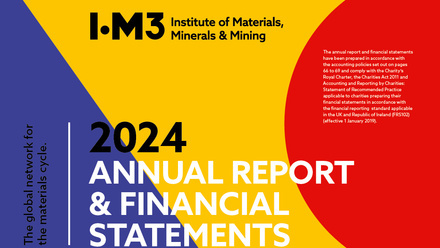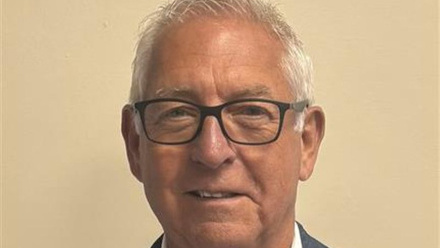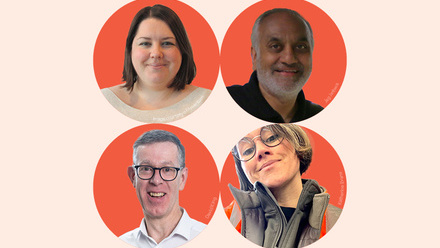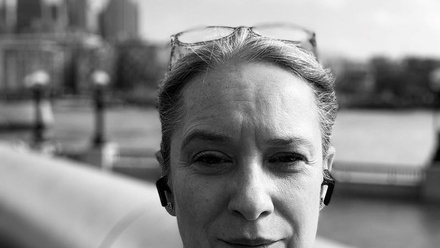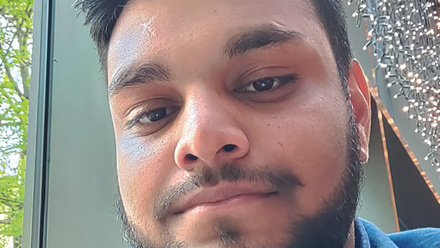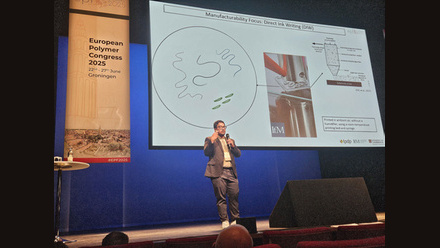A role model is born – interview with Dr Clara Barker
As a trans woman, Dr Clara Barker did not have a role model that she could relate to growing up. Years later, as a materials scientist at Oxford University, UK, she hopes to inspire others. To mark Pride month in June, Andrea Gaini chats with her about being an LGBTQ+ person in STEM.
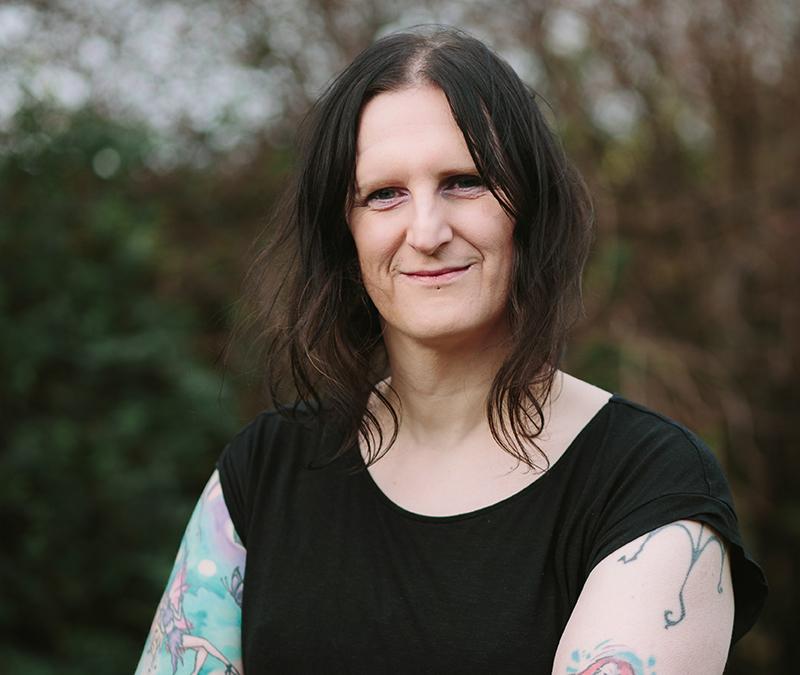
In 1988, Margaret Thatcher’s Government introduced Section 28, a law that prohibited the ‘teaching…of the acceptability of homosexuality as a pretended family relationship’ by local authorities. Clara Barker, a materials scientist at the University of Oxford, UK, was in school when the law was passed and remembers feeling like the ‘odd one out’ and having to hide her identity as a transgender person.
She explains how in the 80s and 90s, ‘when I was growing up…there were four TV channels and no Internet. So, we didn't have the information, the knowledge, or the awareness of LGBTQ+ lives’.
Clara recalls how the UK was starting to wake up to LGBTQ+ issues at that time, ‘however, the backlash to that meant that…Section 28…was introduced. So now, teachers weren't allowed to talk openly. If they were LGBT, they had to hide it, public figures had to hide it. You certainly didn't have anyone coming into school and saying I'm an LGBT actor or scientist’.
She explains how the lack of visibility, openness and information translated to lack of support.
‘So, you just felt you had to keep it to yourself. You felt that, because you didn't see any trans people in school, on TV and in the press, well you've got to assume that you're the odd one out.
‘This is a big reason why it's so important that we are more open, and that we do see more role models, because it turns out, I wasn't the only trans kid. I probably wasn't the only trans kid in the school. I certainly wasn't the only LGBT kid in the school,’ she says.
Clara is now the Manager for the Centre for Applied Superconductivity in the Materials Department at the University of Oxford, where she seeks to inspire other LGBTQ+ people who are interested in a career in STEM.
When did you first become interested in STEM and how did you come to materials science?
I fell into science in school. I was always good at [it] and I always enjoyed it. But actually, I had a lot of trouble in school with my mental health. So, I didn't actually finish my A-Levels. I left school before I'd finished and I spent a few years doing different jobs.
And then I wanted to try and get onto a degree. So, I was trying to figure out what I wanted to do. I actually did a foundation course and then degree in Electrical Engineering [at Manchester Metropolitan University, UK]. I started out the engineering route. During my undergrad, I did a year placement in industry with a company that made vacuum deposition equipment, I went on to work there after my degree as a Development Engineer. But I really got into the process engineering side of it and a large part of that job became materials engineering.
Later, someone asked if I was interested in a PhD and I applied for it. I got offered this Materials Science PhD, making thin films using high-power impulse magnetron sputtering (HiPIMS), and [specifically], it was making transparent conductive oxides. I was working on aluminium-doped zinc oxide to try and make electronic transparent circuits basically. I was particularly interested in making them on thin, flexible, plastic substrates rather than solid substrates. And I was hooked then. The opportunity came up and I just evolved with it.
What did you do after your PhD?
During my PhD, I had got the opportunity to work with a group in Finland for a month. I was still working on transparent conductive oxides, but I was using a different technique to make them – atomic layer deposition. That was really interesting, because it gave me a contrast in two different ways of producing the same type of films, seeing what the differences are in the characteristics. I went back while writing my thesis to work as a visiting researcher.
I was then offered a postdoctoral position in Switzerland. I was making HiPIMS films there as well. I was mostly making hardness coatings there, so, titanium nitride, titanium silicon nitride and silicon carbide, things like that.
How did the role at Oxford University come about?
My PhD was a joint project, which was split with the University of Liverpool, Manchester Metropolitan University and Oxford University, so I knew a group leader there.
But the truth of the matter is that towards the end of my postdoctoral positions, I had severe depression because I knew I was transgender, but I hadn't transitioned.
And so, I sort of thought that I had to make a choice between science and transitioning, because I hadn’t seen or met any trans scientists. In 13 years, I met two LGBTQ+ scientists, and no trans scientists.
I honestly thought I had to choose myself and my health and my happiness, over science.
So, I was actually ready to quit. I was looking at alternative career paths and I heard about this job at Oxford. To be honest, I only came to Oxford, to see what it was going to be like interviewing in STEM once I had transitioned. Seven years later, I'm still here. So that's something.
Could you share your experience of transitioning?
Admittedly, transitioning is a long process. It doesn’t really end and there’s still aspects of that now.
I started transitioning in Switzerland, but I was doing so in secret, which is not the healthiest thing to do. I was speaking to specialist counsellors out there for a long time. And then I actually ended up being prescribed hormones and started medically transitioning while I was there. But I wasn't out at work. I didn't tell anyone because I knew my contract was coming to an end and it just seemed easier to keep it to myself.
And so, it was very much that I was transitioning socially, telling my friends and family, but I wasn't doing so in work.
As soon as I finished that job, I went full-time transitioning, and started changing my name.
In your career, you are putting yourself out there as a role model that you would have wanted to see when you were in school. Why do you think this is important?
It impacted me a couple of different times in my life. When I was young, you just didn't hear, [and] we didn't even have, the word transgender. You certainly didn't see any trans people around you at all, full stop.
I had no one I could connect to, I had no one that made me feel, ‘this isn't just me. There's somebody else like that’. So that made me feel like I was the odd one out and made me feel like I was weird.
And then in science, I'd worked in STEM for 13/14 years and I met two out LGBTQ+ people, no trans people.
So even if by this point, we've got the Internet and more than four TV channels, and I’d started to see trans people on TV, but you still didn't see any trans scientists. It doesn't mean that they weren't there. It doesn't mean that there weren't people who had transitioned. But there was less openness, less visibility.
And so, again, it made me think that, ‘okay, well, now society says I can transition but not in science, I need a different career’. And so, who you see around you really impacts your sense of belonging.
I wasn't sure what the reaction was going to be from colleagues. And because I didn't see any LGBT people, I thought it was going to be negative, I thought it was going to be bad. And, actually, most people were more accepting than I expected. People didn't really care. Most people that I'd worked with previously, they just cared about my science.
But I didn't have anything to gauge that, because I had no way of seeing them interact with other trans scientists.
I did face some discrimination from some people that I used to work with, but the vast majority were really accepting and just didn't really care.
In 2018, you gave a TED talk about why we need to build trust to create diversity in institutions. What is trust in that context and how do we build it?
I think for me, it plays in two different ways. And I will say, since 2018, when I gave that talk, some of my views have evolved a little bit, because hopefully we will always be evolving and learning.
For me, on trust, there's a couple of different things. One is that, with science, we have this idea that ‘we don't care who you are, just do the science’. And we talk as if there are no barriers. But actually, we're starting to see reports that show that if you're a woman, [or] if you're black in science [for example], there are additional barriers that you're facing.
And so being open about those barriers is important. If there's a wall of silence, or if you're specifically saying that those barriers don't exist, then people like me who have seen those barriers don't trust you. This is why reports that are coming out, they're so important, because they're honest, they're saying these are the issues we're facing. That goes a long way into being able to trust these institutions – that they're not hiding anything, they're being open.
Also another thing is that we keep on saying is, ‘well, just be yourself’. But if you are yourself, there will be people who very openly will oppose you. They are openly homophobic, transphobic, racist and some fields are worse than others. So, we're telling people to be themselves, but other people feel that they're able to say and do what they want. And so, in order for me to be able to trust, I've got to feel safe, I've got to feel your honesty, as a trans person.
In the UK, right now, if you're speaking out about being trans, you feel like you've got a target on your back. It is risky, and I don't recommend it for everyone. And so, if institutions and societies say, ‘be yourself’, well, we need to trust that you've got our back, that you will hold people accountable for their words and actions, and that we can be ourselves.


